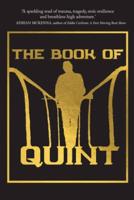Publisher's Synopsis
Excerpt from The Royal Natural History, Vol. 3: Section V
In conformity with the absence of any external indications of a neck, the vertebrae in that region of the backbone of Cetaceans are abnormally Shortened, so that even in the largest species this part of the column may not much exceed a foot in length. This shortening of the neck is, however, not accomplished by any reduction in the number of the vertebrae from the normal seven, but by the Shortening of the body of each of these vertebrae until it assumes the form of a broad, thin plate. The necks of a giraffe and a whale present, therefore, the extremes in the modifications assumed by their constituent vertebrae these joints undergoing the maximum degree of elongation in the one, and of abbreviation in the other. In many Cetaceans the whole or a certain number of the vertebrae of the neck are welded together into one solid mass. In the hinder portion of the backbone the region of the tail is only distinguished from that of the trunk by the vertebrae (as Shown in our figure of the skeleton of the Greenland whale) carrying chevron-bones affixed to their under-surfaces; there being no mass of united vertebrae, corresponding to the sacrum of other mammals.
The skeleton of the fore-limbs exhibits all the segments characterising those of terrestrial mammals, although some of these are much modified. There are no collar-bones (clavicles) but the Shoulder-blades, or scapulae, are very large, and are much elongated in the antero-posterior direction. The humerus, or bone of the upper arm, although much shorter than usual, has a free movement at its articulation with the shoulder-blade; but its junction with the two bones of the fore-arm, like all the joints lower down in the limb, admits of scarcely any motion. Indeed, in all these joints the bones articulate by ?attened surfaces closely applied to one another, and are bound together by fibrous tissue. The bones of the fore-arm (radius and ulna) are elongated and ?attened, and lie nearly parallel, one in front of the other. The number of digits in the ?ippers is usually five, although occasionally reduced to four; and in the second and third of these there are always more than the ordinary three joints below the metacarpus. The only rudiments of the hind-limbs are a few small bones beneath the sacral region of the backbone representing part of the pelvis, and occasionally part of the limb itself (f. And p. In the figure on p.
About the Publisher
Forgotten Books publishes hundreds of thousands of rare and classic books. Find more at www.forgottenbooks.com
This book is a reproduction of an important historical work. Forgotten Books uses state-of-the-art technology to digitally reconstruct the work, preserving the original format whilst repairing imperfections present in the aged copy. In rare cases, an imperfection in the original, such as a blemish or missing page, may be replicated in our edition. We do, however, repair the vast majority of imperfections successfully; any imperfections that remain are intentionally left to preserve the state of such historical works.









